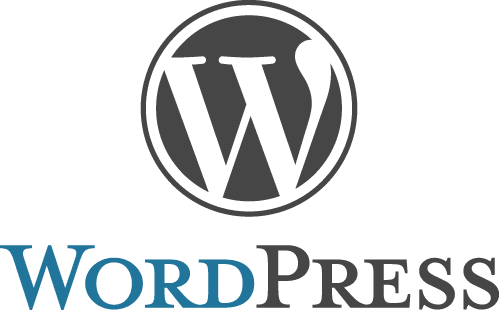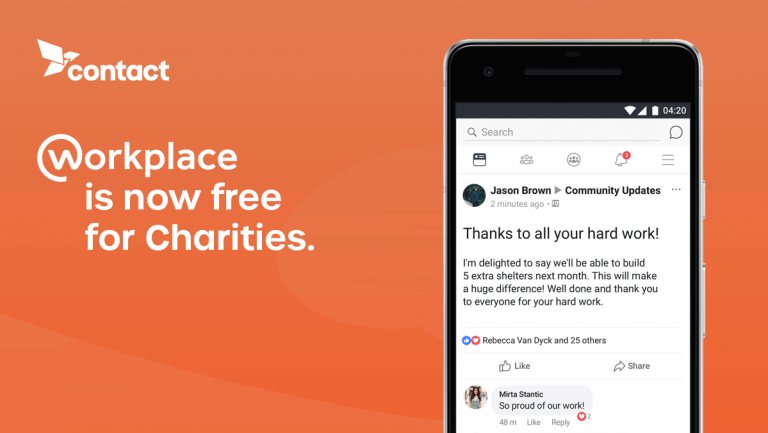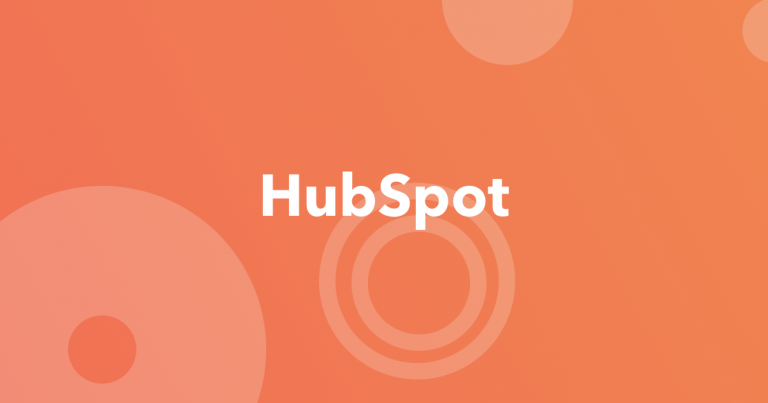Is your website costing you customers? Get your free report
Is your website costing you customers? Get your free report
At Contact, we’re looking forward to #GivingTuesday. We are frequently approached by charities who have little or no budget and don’t know where to start when it comes to building their online presence. With that in mind, we thought we’d develop this resource highlighting the free digital resources that charities have access to. We recently launched a new website for Stuart Anderson, a trustee at the Glasgow Children’s Hospital Charity. Additionally, we’ve been happy to help the mentoring charity MCR Pathways with their hosting & digital strategy.
We will continue to update this resource over time. If you have any suggestions for resources to be added to this blog then please email Colin.

For UK based organisations, the TechTrust Exchange allows valuable access to discounts available through various vendors and is a worthwhile resource for charities. UK based charities must register with the exchange to become eligible for the Google Ads Grant. Additionally, the exchange hosts various other discounts available to charities. They often range in the 10% mark.
G-Suite for Nonprofits offers full G-Suite however, it has far fewer core apps than Office and caps cloud storage at 30GB per user.
For charities that engage in teaching G-Suite comes with the added advantage of Google Classroom – the LMS developed by Google for school classrooms which can be appropriated for other educational uses.
Both Office 365 and G-Suite come with “app builders”, allowing you to interface with databases in a simple format.
Choosing between Office 365 and G-Suite is tough and it depends on several factors, including the age and digital experience of your staff. People who have worked in offices over the past two decades are likely to be familiar with the Microsoft Office suite – particularly the desktop version – while younger people and more recent graduates are likely to have collaborated intensely using Google Docs.
Both Office 365 and G-Suite offer similar levels of functionality across the core apps – with Google perhaps having a more user-friendly and collaborative interface while Office offers more advanced functionality for spreadsheet aficionados.
Office 365 “Donation” (where your charity receives the software as a donation from Microsoft) includes the web version of Office apps (no Desktop software) and includes Exchange and Outlook to allow you to manage the email accounts of up to 300 users. Cloud storage is capped at 50Gb per user.
Office 365 Premium (the one that includes desktop versions of the apps) is available at £2.30 per user per month (down from £9.40 user/month for regular businesses – representing a 75% discount).
G-Suite for Nonprofits offers full G-Suite however, it has far fewer core apps than Office and caps cloud storage at 30GB per user.
For charities that engage in teaching G-Suite comes with the added advantage of Google Classroom – the LMS developed by Google for school classrooms which can be appropriated for other educational uses.
Both Office 365 and G-Suite come with “app builders”, allowing you to interface with databases in a simple format.
Choosing between Office 365 and G-Suite is tough and it depends on several factors, including the age and digital experience of your staff. People who have worked in offices over the past two decades are likely to be familiar with the Microsoft Office suite – particularly the desktop version – while younger people and more recent graduates are likely to have collaborated intensely using Google Docs.
G-Suite for Nonprofits offers full G-Suite however, it has far fewer core apps than Office and caps cloud storage at 30GB per user.
For charities that engage in teaching G-Suite comes with the added advantage of Google Classroom – the LMS developed by Google for school classrooms which can be appropriated for other educational uses.
Both Office 365 and G-Suite come with “app builders”, allowing you to interface with databases in a simple format.
Choosing between Office 365 and G-Suite is tough and it depends on several factors, including the age and digital experience of your staff. People who have worked in offices over the past two decades are likely to be familiar with the Microsoft Office suite – particularly the desktop version – while younger people and more recent graduates are likely to have collaborated intensely using Google Docs.
Both Office 365 and G-Suite offer similar levels of functionality across the core apps – with Google perhaps having a more user-friendly and collaborative interface while Office offers more advanced functionality for spreadsheet aficionados.
Office 365 “Donation” (where your charity receives the software as a donation from Microsoft) includes the web version of Office apps (no Desktop software) and includes Exchange and Outlook to allow you to manage the email accounts of up to 300 users. Cloud storage is capped at 50Gb per user.
Office 365 Premium (the one that includes desktop versions of the apps) is available at £2.30 per user per month (down from £9.40 user/month for regular businesses – representing a 75% discount).
G-Suite for Nonprofits offers full G-Suite however, it has far fewer core apps than Office and caps cloud storage at 30GB per user.
For charities that engage in teaching G-Suite comes with the added advantage of Google Classroom – the LMS developed by Google for school classrooms which can be appropriated for other educational uses.
Both Office 365 and G-Suite come with “app builders”, allowing you to interface with databases in a simple format.
Choosing between Office 365 and G-Suite is tough and it depends on several factors, including the age and digital experience of your staff. People who have worked in offices over the past two decades are likely to be familiar with the Microsoft Office suite – particularly the desktop version – while younger people and more recent graduates are likely to have collaborated intensely using Google Docs.
For those that don’t already know, Google offers up to $10,000 pcm in free advertising for nonprofits in what is called the Google Ad Grant. If used correctly, these ads could form the greatest source of traffic to your website. As free digital resources for charities go, this is the mother-lode. It is not, however, easy to implement.
There are additional limitations placed on a charity that are not placed on a traditional Google Ads account:
These limitations may mean that your charity will require the help of an experienced Google Ads professional to implement the grant properly. However, if you do manage to use your Google Ad Grant correctly, you can drive more than $10,000 per month worth of value to your nonprofits. Success stories, where the Google Ad Grant has been used to drive donations or participation with charities can be viewed here.
For those that don’t already know, Google offers up to $10,000 pcm in free advertising for nonprofits in what is called the Google Ad Grant. If used correctly, these ads could form the greatest source of traffic to your website. As free digital resources for charities go, this is the mother-lode. It is not, however, easy to implement.
There are additional limitations placed on a charity that are not placed on a traditional Google Ads account:
These limitations may mean that your charity will require the help of an experienced Google Ads professional to implement the grant properly. However, if you do manage to use your Google Ad Grant correctly, you can drive more than $10,000 per month worth of value to your nonprofits. Success stories, where the Google Ad Grant has been used to drive donations or participation with charities can be viewed here.
While some individual hosting companies do offer to host charity websites for free, we’ve yet to find one that offers everything for free – including the SSL certificate required to keep your website secure and GDPR compliant.
Azure for Nonprofits is a cloud hosting service provided by Microsoft and can be used to host apps or websites. Every charity can leverage up to $3,500 per annum’s worth of Azure service credits. Additionally, nonprofits can access up to $1,500 of Azure Active Directory Premium.
The Amazon-owned AWS cloud service offers $2,000 in credits to nonprofits. While this is a generous sum, it does appear to be a one-off donation compared to Microsoft’s annual amount.
What should be noted about these cloud services is that they require a generally quite advanced user to implement them properly. For example, this guide to implementing WordPress on AWS has a suggested implementation time of 1-hour – which is approximately 59 more minutes than the “one-click WordPress” that many other hosting services offer.

What do you do with a lot of free hosting? Well generally, you need to start with a Content Management System that can be installed to your server. WordPress, Umbraco and Joomla are all free and open source.
WordPress is, by far, the most popular CMS in the world and is relatively user-friendly. If you’re building a website from scratch in WordPress and have a budget of zero we’d recommend a free base theme like OceanWP or WP Astra paired with the Elementor Page Builder. You won’t be able to achieve everything that the pro licenses would entail (and, to be honest, you won’t be able to build a professional class website without the help of a professional) but it offers something quite user-friendly and accessible.
If your charity wants to take donations directly through your website or offers merchandise then Woocommerce – the free e-commerce plugin for WordPress – may be the way to go. It integrates with PayPal out of the box and, as we’ll discuss later, PayPal doesn’t charge processing fees to charities.

While Office365 for Nonprofits offers an intranet solution in the form of Sharepoint, it is a deeply unfamiliar interface for most users. Facebook Workplace for Nonprofits allows the deeply familiar Facebook interface to be used to build engagement among staff members and volunteers.
Some of the world’s most prominent charities including the World Wildlife Foundation, Unicef and the It Gets Better Project use Facebook Workplace to co-ordinate staff and volunteers using the apps they’re already familiar with.

Canva offers its premium Canva for Work product to nonprofits for free. With the use of brand kits and team templates, making simple graphics for social media couldn’t be easier. Canva are also currently beta testing Schedule, a social media scheduling platform, that will be directly integrated into its work platform. This will make it, as far as we’re aware, the only free social media scheduler for charities.
Until Canva Schedule becomes available for everyone, Buffer offer 50% discounts on their social media scheduling software for charity.
Adobe, whose Creative Cloud is the backbone to most design exercises, offer a 15% discount to nonprofits.

Images and fonts can be expensive but they are crucial to expressing your cause on the internet – whether on your website or in social media posts. Luckily, plenty of websites now offer free stock photography under the Creative Commons Public Domain license or similar. Unsplash, Burst by Shopify and Pexels are a good place to start. Google Fonts is a great source for free fonts that can be delivered easily while Ikonate offers icons that are free, open source and accessible. The resource All The Free Stock is a good place to go to find new additions to the world of free stock.

Hubspot CRM is free. For everyone. They have some free resources aimed at charities looking to improve their donation rates as well as several free certifications in various sales and marketing skillsets. There are several charity-themed CRMs in the UK that are either free or have free tiers such as Donorfy and Donation Manager RedCloud which may be suited to a fundraiser’s workflow.

Sending newsletters to supporters, donors and volunteers is a key way to keep a community active around a charity. Most of the main emailing marketing platforms offer a free tier. Mailchimp’s free version allows you to have up to 2,000 email subscribers and send up to 12,000 emails per month. They also offer a 15% discount for nonprofits and a 10% discount for accounts with two-factor authorization enabled. As the discounts are applied individually, this stacks to a total 23.5% discount.

Most charities require donations to keep running. As there are a few large donation platforms this creates a lot of administration in making sure your charity is capable of receiving donations everywhere.
Charities can register with Amazon Smile so that 0.5% percentage of their supporters Amazon sales goes to them instead. This allows for a passive giving style – if your supporters are shopping with Amazon anyway then this can be a reliable source of extra income for your nonprofits.
Facebook is actively encouraging giving on its platform – prompting people to set up fundraisers for their birthday, for example. Over $300m was raised in Facebook’s first year of Birthday Fundraisers. Facebook, along with PayPal, are matching up to $7 million in donations on Giving Tuesday (the day after Cyber Monday) in the USA. In the UK, PayPal are matching up to £50,000. While Black Friday has been internationalised successfully, Giving Tuesday lags behind. All money raised through Facebook giving goes straight to the charity, with no processing fees involved (in partnership with PayPal).
The PayPal Giving Funds allows charities to take donations, with GiftAid, without charging any fees. Additionally, they provide donor and donation report and issue receipts and grants. As donations can often be cut away by processing fees, this represents good value for charities looking to take payment. PayPal Giving can also integrate with the PayPal Here card reader for charities looking to take payments in person.
Through running, bake sales and other events your supporters will often take the initiative to raise money for your charity by themselves. While this is great, it often falls on the charity to check that they can be donated to through the platform of the supporter’s choice. Money Saving Expert has created this resource to show which donation platforms give the highest % of a donation to charities with wonderful.org, the PayPal Giving Fund and Facebook giving 100% of donations + Gift Aid (where eligible) to the charity. Some, such as MyDonate charge a flat fee on card processing while JustGiving charges both a card processing fee and a 5% charge on donations.
I think we’ve shown that is it quite feasible for charities to establish web presences, perform daily office tasks, and advertise to the world for next to nothing thanks to the generosity of several key platforms. Free digital resources for charities are everywhere! Although we’ve tried to highlight as many user-friendly options as possible, being able to implement much of this relies on having access to a skilled digital professional – whether an IT pro or a developer. If your charity cannot afford to hire a professional like this, you may be able to access skilled volunteers through a programme such as Reach Volunteering, who connect skilled professionals with charities. Being able to effectively implement these digital resources should cut costs, improve efficiency, and the increase the impact of your charity online.
We find a simple 15 minute conversation is enough to work out if our services are right for you.

We kept to our promise and have been keeping an eye out for new free digital solutions for solutions.
For charities and non-profits looking for text messaging solutions twilio.org are offering a $500 “kickstart credit” (worth roughly 80,000 text messages) and discounts on ongoing Twilio usage. This is ideal for charities who use SMS for fundraising or for organising.